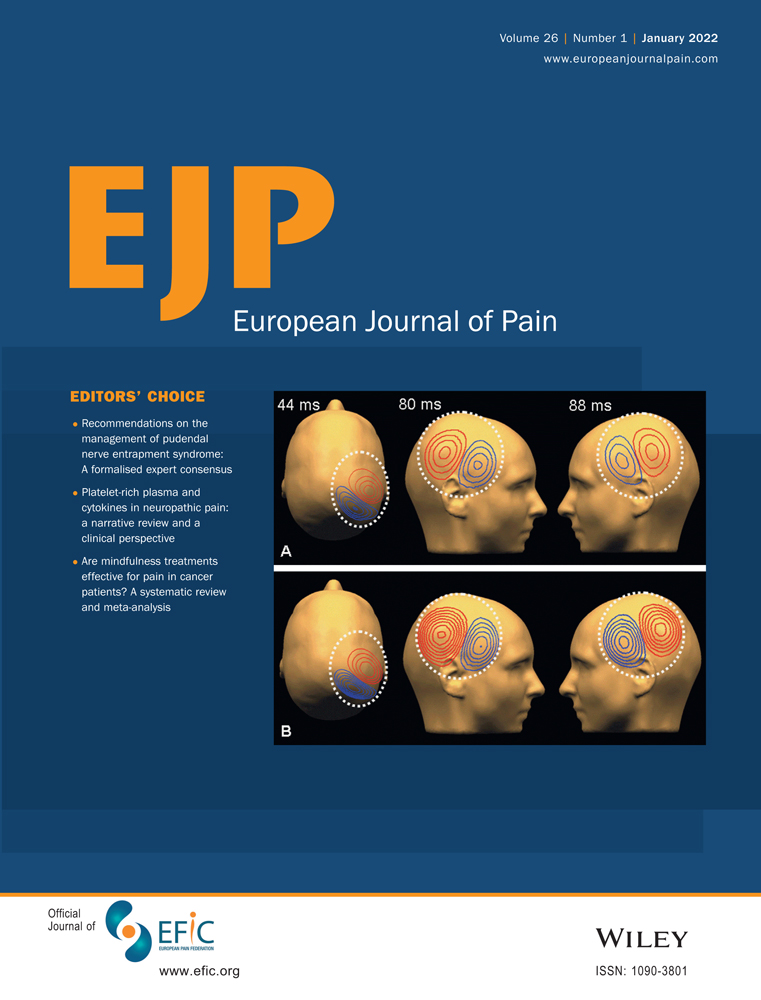Commentary on “The role of psychological flexibility, perceived injustice, and body-image in Vulvodynia: A longitudinal study” by Chisari et al.
This article is a commentary on The role of psychological flexibility, perceived injustice and body image in Vulvodynia: A longitudinal study by Chisari, C, Budhraja, M, Monajemi, MB, et al. Eur J Pain. 2022; 26: 103–113. https://doi.org/10.1002/ejp.1841
This journal recently published a paper by Chisari et al., entitled “The role of psychological flexibility, perceived injustice, and body-image in Vulvodynia: A longitudinal study” (Chisari, Budhraja, et al., 2021). The study found that committed action positively predicted depression at 3 months and pain acceptance positively predicted pain interference at 3 months. Neither present moment awareness, perceived injustice nor body exposure anxiety and avoidance during sexual activities were significant predictors of any outcome measures. Research into psychological factors in vulvodynia is lacking (Chisari, Monajemi, et al., 2021), and exploration of the psychological flexibility (PF) model is a novel idea. Given that the PF model is a newer concept in the wider pain field, it is important to consider the strengths and weaknesses of the model in its application to women with vulvodynia.
The PF model describes one's capacity to elicit behaviours that are value driven, while remaining conscious of concomitant thoughts, feelings, and sensations, and aware that these may in turn change behaviours. The model includes six interrelated processes (McCracken & Morley, 2014): pain acceptance, cognitive defusion, present moment awareness, self-as-observer, values and committed action. In the wider pain field, PF has shown to be an important resilience factor in those with chronic pain and changes in PF often predict treatment outcomes. No previous studies have investigated PF or the processes of PF in women with vulvodynia (Chisari, Monajemi, et al., 2021). Therefore, the investigation of PF in women with vulvodynia was novel and clearly warranted.
However, there are also weaknesses in the PF model and how it was applied in this study. Chisari et al. note the six components of PF in their introduction, yet they only measured three of these six components (pain acceptance, present moment awareness and committed action). The outcome measures used to assess these three components were the Chronic Pain Acceptance Questionnaire, the Tacting of Function Scale and the Committed Action Questionnaire, and none of these scales have been validated for use in vulvodynia. Previous research has also questioned the psychometric properties of these measures in various chronic pain populations, casting further doubt over their applicability in women with vulvodynia. The use of non-validated measures and only measuring three of the six components of PF does beg the question: could the authors have measured PF more appropriately? It is worth noting that research into vulvodynia, particularly the validation of outcome measures, is sparse, and so this leaves little choice for the authors to implement validated measures. An outcome measure that more holistically assesses all six components of PF may have been more appropriate, such as the Acceptance and Action Questionnaire-II (AAQ-II), or the pain-specific version, the AAQ-II-P.
Chisari et al. found that committed action positively predicted depression at 3 months and pain acceptance positively predicted pain interference at 3 months, whereas present moment awareness did not predict any outcomes at 3 months. The use of the AAQ-II would have provided additional insight into the PF model, including the three missed components—cognitive defusion, self-as-observer and values. It is plausible to suggest that these three components could be important predictors of outcomes at 3 months; however, the outcome measures used in the Chisari et al. study were unable to assess these.
The authors conclude that the inclusion of PF in treatment approaches would be appropriate in women with vulvodynia, based on their results. They recommend Acceptance and Commitment Therapy (ACT) as such an example of including PF in a treatment approach. This recommendation is presumably based on the theory that ACT can increase PF and has been shown in other chronic pain populations to improve outcomes. Considering the generally poor outcomes from treatment for vulvodynia, it is possible that ACT may be a successful intervention; however, this assumption cannot be made on the results of the Chisari et al. study alone. There is a need to explore all six components of the PF model more thoroughly in this population before the model can be used as a theoretical basis for using ACT as an intervention.
It is important to highlight the significance of this work done by Chisari and colleagues. Research into vulvodynia, and women's health conditions more widely, has historically been largely ignored. As a result, we lack the foundational knowledge that other conditions may have. The authors should be commended for this novel and desperately needed investigation into PF in women with vulvodynia. I look forward to future work, which will replicate and extend these findings and provide further insight into the role of PF in the development, maintenance and recovery from vulvodynia.




